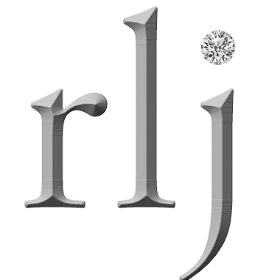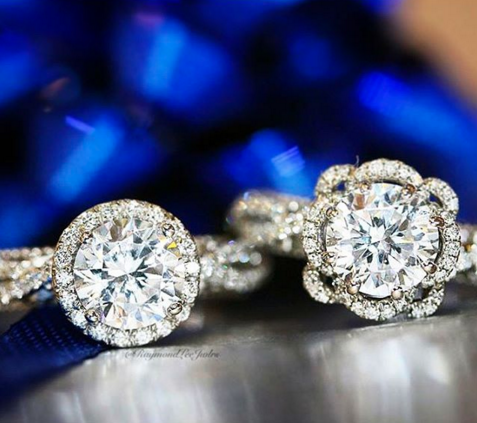Diamond Shapes Guide: Round Brilliant

The round brilliant diamond is by far and away the most popular diamond shape. This shape defines “classic.” When people think of an engagement ring, so often the first image that pops into their head is of the round brilliant solitaire. The beauty and timelessness of this particular shape secures it the number one spot, with 75% of all diamonds sold belonging to the round brilliant club.
Thanks to the round brilliant’s design and proportions, it maximizes the light, fire and beauty in a way no other diamond can. Cut into 58 facets (57 when there is no culet – the bottom facet of a diamond) these beauties command attention, and a premium.
Rounds are more expensive per carat than other, fancy shapes like princess, pear, cushion, emerald and oval primarily because of the demand – the more brides want them, the more they’re willing to pay. Additionally, compared to the shaped mentioned above, these diamonds have a relatively low yield for stone cutters. When a round brilliant is cut from rough, more of the diamond needs to be honed away to create the finished product, resulting in a diamond that can cost up to 35% more than a fancy-shaped counterpart.
The round brilliant diamond may be the most popular today, but it has evolved over time. First came the round diamond shapes with antique or proprietary cuts that varied on the Old European style. Before the modern round brilliant became standard, the evolution of round diamond cuts leading up to 1919 resulted in “transitional diamonds” those that weren’t quite Old European or modern round brilliant.
1919 was the watershed moment for round brilliants, with the publication of Marcel Tolkowsky’s “Diamond Design: A Study of the Reflection and Refraction of Light in Diamond”. In it, he discussed how the ideal proportions of a diamond would produce maximum fire, scintillation and brilliance – aka beauty. He specified his proportions as 53% table, 59.3% depth, 34.5% crown angle, and a visible culet – something that’s undesirable for today’s round brilliants. Obviously, as time passed and diamond cutting technology advanced by leaps and bounds, the ideal proportions for a round diamond have evolved.
Today, most jewelers agree that the ideal for a round brilliant would be 53% (ideal) at best and 60% (excellent),but even up to 64% is still considered “good.” Depth should be between 58% – 64%, so Tolkowsky’s measurements weren’t that far off. Plus, people have different preferences for what makes a diamond beautiful.
When it comes to color, round brilliants give buyers some of the very best flexibility. The facet pattern gives shoppers wiggle room, so that the G-H color range looks beautiful, bright and white, and only visibly warmer when held directly next to a D-F round. Even I-J round brilliants still look beautiful, with a warmth that looks gorgeous in yellow and rose gold settings.
Clarity too lets round brilliant lovers get away with budget-boosting grades. Again, the facet pattern hides flaws better than the clean, open facet pattern of an emerald or asscher. Where a step cut may require a grade of VVS1 to please a discerning customer, that same shopper would be smitten with a VS2 round brilliant, simply because any inclusions are more difficult to see.
So while you do pay more per-carat for this shape, it’s among the most forgiving when it comes to the rest of the 4 C’s. Add to this the inimitable beauty and timelessness of the shape, and it’s no wonder the round brilliant still reigns supreme.







Comments are closed.